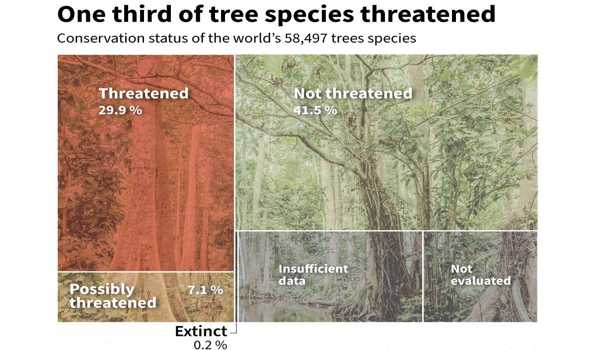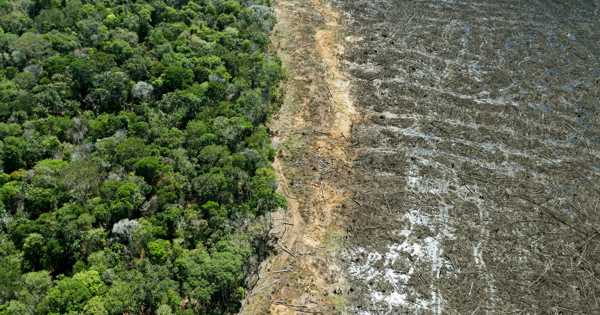According to a global index, one-third of all tree species are threatened with extinction, and climate change could tip some forests into ecosystem collapse. The most serious threats to trees, according to the State of the World’s Trees report, are land clearance for farming (both crops and livestock) and logging, with climate change also “having a clearly measurable impact.”
The study examined the threats to 58,497 tree species worldwide and discovered that 30% (17,500) are threatened with extinction, with the remaining 7% listed as “possibly threatened.” There was insufficient data for an evaluation for 21% of the species, and just over 40% were classified as “not threatened.”
Well-known trees such as magnolias were among the most endangered, along with oaks, maples, and ebonies. 142 tree species have been discovered to be extinct, and over 440 have fewer than 50 individual trees in the wild.
In a foreword to the report, Jean-Christophe Vie, Director General of Fondation Franklinia, said, “Many tree species are on the verge of extinction, some represented by one last living individual.” He called it “shocking” that deforestation rates are still so high, given the critical role trees play in providing habitat for a large proportion of the world’s animals and plants, slowing climate change by absorbing carbon and providing ingredients for medicines.
Almost a third of the world’s tree species are at risk of extinction, according to a new report. It found that 30% of tree species are at risk of going extinct, while 440 species have fewer than 50 individuals left in the wild.
According to the State of the World’s Trees report, 17,500 tree species – roughly 30% of the total – area on the verge of extinction, with 440 species having fewer than 50 individuals remaining in the wild. According to the report, the number of threatened tree species is more than double that of threatened mammals, birds, amphibians, and reptiles combined.
Brazil has the most tree species (8,847) and the most threatened trees, owing to large swaths of the Amazon rainforest that are increasingly under threat from massive agricultural expansion and logging (1,788).
However, tropical Africa has the highest proportion of threatened species, particularly on islands such as Madagascar and Mauritius, where 59 percent and 57 percent of tree species, respectively, are threatened.

Ecosystem collapse
The report also expressed concern that the destruction could spread across ecosystems, affecting tree communities. A million hectares of spruce species have been lost in Alaska, and ten million hectares of lodgepole pine have been lost in British Columbia.
Forest ecosystems can collapse when they are subjected to multiple stressors, such as fire, logging, and habitat fragmentation, all of which have the potential to interact and “drive abrupt ecological change,” according to the report.
“However,” said Adrian Newton, Director of Conservation Ecology at Bournemouth University, in the report, “climate change has the potential to become the primary driver of collapse in most, if not all, types of forest ecosystem.” The effects of climate change and severe weather, which are listed as a direct threat to over a thousand species, include shifting habitats, increased storms and floods, as well as more fires, pests, and disease.
‘Huge opportunity’
Botanic Gardens Conservation International and experts from the International Union for Conservation of Nature (IUCN), which is holding a key biodiversity conference in France this week, coordinated the five-year assessment.
The strong emphasis on restoring forests to mitigate the effects of climate change, according to Vie, is a “huge opportunity to change this dire picture.” However, he stressed the importance of planting the right trees in the right places. “Tree species that have evolved over millions of years, adapting to changing climates, are no longer able to withstand the onslaught of human threats,” Vie said.
“How short-sighted are we to allow the extinction of tree species on which global society depends both ecologically and economically? If we could only learn to respect trees, many environmental issues would be greatly alleviated.”
The report identifies the most significant threats to trees. Farming ranks first (29 percent for crops and 14 percent for livestock), followed by logging (27 percent), housing and other commercial development (13 percent), fire (13 percent), mining (9 percent), pulp plantations (6 percent), and invasive species (3 percent). Climate change (4 percent) is at the bottom of the list, despite the additional pressure it places on fire and agriculture.
















